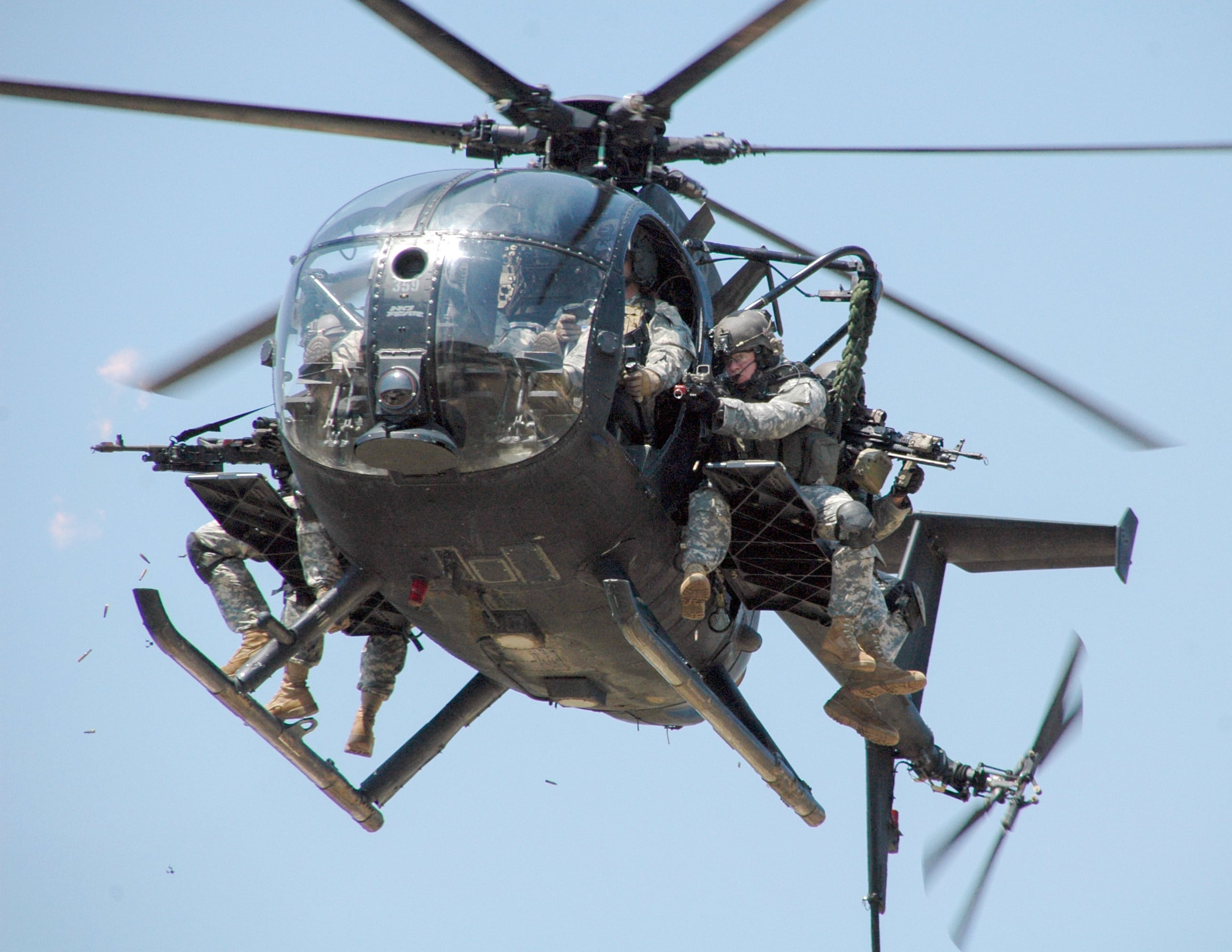TAMPA, Fla. — A small, yet nimble and heavily used light-attack helicopter that carries small teams of special operators into battle has a problem.
The A/MH-6 Little Bird is becoming too slow to keep up with its counterparts in the fleet, and it’s already too slow to run and gun with new aircraft that the U.S. Army is developing under its Future Vertical Lift program.
While far from official, a new technology could keep the Little Bird — or something very much like it — in the fleet over the coming decades: a hybrid-powered version.
A hybrid helicopter might give developers a means to increase the 80 knots at which the Little Bird currently flies. That existing speed is fast when you’re dangling out of the side of a small airframe, as many Oakley-sporting operators have done for decades. But its far from fast enough for the base requirements of new helos coming online, which must hit 180 knots and are likely to be flying closer to 200 knots or more, said Geoff Downer, program executive officer for the special operations forces’ rotary-wing portfolio.
“My big concern is we’re modernizing our fleet to fly at 200-plus knots and I’ve got an aircraft that flies at 80 knots,” Downer said Wednesday at the Special Operations Forces Industry Conference, hosted in Tampa, Florida, by the National Defense Industrial Association.
U.S. Special Operations Command and its rotary-wing experts are waiting to see how the Army moves forward with its two future vertical lift projects: the future long-range assault aircraft and the future attack reconnaissance aircraft, which are to replace the venerable UH-60 Black Hawk and CH-47 Chinook, respectively.
Neither the FARA nor the FLRAA fit the peculiar role of the only commercial rotary aircraft in U.S. Special Operations Command’s inventory, but Little Bird does.
Defense News reported as early as 2016 that the Army and SOCOM were looking at the strain and capabilities that Little Bird could endure.
Part of it is a funding issue. The Army doesn’t use the Little Bird, so when big-ticket upgrades come to the Chinook, which has flown since the 1960s, or the Black Hawk, SOCOM benefits from those moves.
“If it’s Army common, it’s paid for under Army dollars,” Maj. Gen. Clayton Hutmacher, the deputy commander of U.S. Army special operations, said at the 2016 Army Aviation Association of America’s Mission Solutions Summit.
The commander said at the time that the service would need to look for a new aircraft after the Block 3 portion concluded.
Downer’s presentation on Wednesday showed that date hitting by 2034.
Special operators have upgraded the Little Bird several times and continue to do so. They’ve shifted the helo from four- to five- to six-blade rotors, reduced the weight, and strengthened the airframe. This year, they’re adding a next-generation tactical radio system. Next year, they’re upgrading its sensor package.
They’re also delivering crash-worthy seats and fuel tanks. In the next block of upgrades, slated to start in fiscal 2024, they will install a new machine airframe made by Boeing for all the Little Birds.
Meanwhile, a new performance kit composite rotor is expected to increase blade diameter to add lift. And they’re also adding a new AMS cockpit that gives pilots the ability to use motion controls in that same block, Downer said.
Those solutions will help the Little Bird fly its heart out, but only for so long. In a little more than a decade, when the future vertical lift aircraft begin coming online, the Little Bird may be unable to keep up with the rest of the fleet.
Downer doesn’t expect to have a 100% fleet replacement with the FARA, instead anticipating a mix for the SOCOM mission set. “So we need this street fighter, we need this aircraft to be rapidly deployed, so we’re going to have some mixed fleet going forward.”
Downer told Military Times there are opportunities with a hybrid Little Bird because it will reduce rotor speed, which can increase the aircraft’s speed by offloading some of the drag.
Todd South has written about crime, courts, government and the military for multiple publications since 2004 and was named a 2014 Pulitzer finalist for a co-written project on witness intimidation. Todd is a Marine veteran of the Iraq War.





